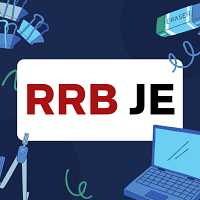Railways Exam > Railways Questions > Which of the following is fastest DMA mode?a)...
Start Learning for Free
Which of the following is fastest DMA mode?
- a)Cycle steal
- b)Hidden mode
- c)Block Transfer
- d)None of these
Correct answer is option 'C'. Can you explain this answer?
| FREE This question is part of | Download PDF Attempt this Test |
Verified Answer
Which of the following is fastest DMA mode?a)Cycle stealb)Hidden modec...
Direct memory access (DMA) is a method that allows an input/output (I/O) device to send or receive data directly to or from the main memory, bypassing the CPU to speed up memory operations.
The process is managed by a chip known as a DMA controller (DMAC).
Burst Mode
- In burst mode, an entire block of data is transferred in one contiguous sequence
- Once the DMA controller is granted access to the system bus by the CPU, it transfers all bytes of data in the data block before releasing control of the system buses back to the CPU
- This renders the CPU inactive for relatively long periods of time
Cycle Steal Mode
- In DMA's cycle stealing mode of operation, the DMA controller puts the CPU on hold for each byte of data to be transferred.
- The processor thus knows the fact that the DMA controller is using the bus
Most Upvoted Answer
Which of the following is fastest DMA mode?a)Cycle stealb)Hidden modec...
The correct answer is option 'C', Block Transfer.
Explanation:
DMA (Direct Memory Access) is a technique used in computer systems to transfer data between devices without involving the CPU. It improves the overall system performance by offloading the data transfer task from the CPU to a specialized DMA controller.
There are several DMA modes available, each with its own characteristics and performance levels. Among the given options, Block Transfer is the fastest DMA mode. Let's understand why:
1. Cycle Steal:
- Cycle Steal is a DMA mode where the DMA controller temporarily interrupts the CPU during each data transfer cycle to gain access to the system bus.
- In this mode, the DMA controller "steals" cycles from the CPU to transfer data between the device and the memory.
- Although it allows concurrent data transfer, it interrupts the CPU frequently, causing delays and reducing overall system performance.
- Hence, Cycle Steal is slower compared to other modes.
2. Hidden Mode:
- Hidden Mode is a DMA mode where the DMA controller operates in parallel with the CPU without interrupting it.
- It transfers data in the background, without affecting the CPU's execution.
- While Hidden Mode improves system performance by reducing interruptions, it may not be the fastest mode as it still shares the system bus with the CPU.
3. Block Transfer:
- Block Transfer is a DMA mode specifically designed for high-speed data transfer.
- In this mode, the DMA controller transfers a block of data from the device to memory or vice versa, without interrupting the CPU.
- The DMA controller gains control of the system bus and performs the transfer independently, allowing for efficient and uninterrupted data movement.
- As Block Transfer involves transferring a block of data at once, it reduces the overhead associated with frequent interruptions or small data transfers.
- This mode is particularly useful for devices that require fast data transfer rates, such as disk drives or network interfaces.
- Therefore, Block Transfer is considered the fastest DMA mode among the given options.
In summary, Block Transfer is the fastest DMA mode because it allows for uninterrupted high-speed data transfer between devices and memory.
Explanation:
DMA (Direct Memory Access) is a technique used in computer systems to transfer data between devices without involving the CPU. It improves the overall system performance by offloading the data transfer task from the CPU to a specialized DMA controller.
There are several DMA modes available, each with its own characteristics and performance levels. Among the given options, Block Transfer is the fastest DMA mode. Let's understand why:
1. Cycle Steal:
- Cycle Steal is a DMA mode where the DMA controller temporarily interrupts the CPU during each data transfer cycle to gain access to the system bus.
- In this mode, the DMA controller "steals" cycles from the CPU to transfer data between the device and the memory.
- Although it allows concurrent data transfer, it interrupts the CPU frequently, causing delays and reducing overall system performance.
- Hence, Cycle Steal is slower compared to other modes.
2. Hidden Mode:
- Hidden Mode is a DMA mode where the DMA controller operates in parallel with the CPU without interrupting it.
- It transfers data in the background, without affecting the CPU's execution.
- While Hidden Mode improves system performance by reducing interruptions, it may not be the fastest mode as it still shares the system bus with the CPU.
3. Block Transfer:
- Block Transfer is a DMA mode specifically designed for high-speed data transfer.
- In this mode, the DMA controller transfers a block of data from the device to memory or vice versa, without interrupting the CPU.
- The DMA controller gains control of the system bus and performs the transfer independently, allowing for efficient and uninterrupted data movement.
- As Block Transfer involves transferring a block of data at once, it reduces the overhead associated with frequent interruptions or small data transfers.
- This mode is particularly useful for devices that require fast data transfer rates, such as disk drives or network interfaces.
- Therefore, Block Transfer is considered the fastest DMA mode among the given options.
In summary, Block Transfer is the fastest DMA mode because it allows for uninterrupted high-speed data transfer between devices and memory.
Attention Railways Students!
To make sure you are not studying endlessly, EduRev has designed Railways study material, with Structured Courses, Videos, & Test Series. Plus get personalized analysis, doubt solving and improvement plans to achieve a great score in Railways.

|
Explore Courses for Railways exam
|

|
Similar Railways Doubts
Which of the following is fastest DMA mode?a)Cycle stealb)Hidden modec)Block Transferd)None of theseCorrect answer is option 'C'. Can you explain this answer?
Question Description
Which of the following is fastest DMA mode?a)Cycle stealb)Hidden modec)Block Transferd)None of theseCorrect answer is option 'C'. Can you explain this answer? for Railways 2024 is part of Railways preparation. The Question and answers have been prepared according to the Railways exam syllabus. Information about Which of the following is fastest DMA mode?a)Cycle stealb)Hidden modec)Block Transferd)None of theseCorrect answer is option 'C'. Can you explain this answer? covers all topics & solutions for Railways 2024 Exam. Find important definitions, questions, meanings, examples, exercises and tests below for Which of the following is fastest DMA mode?a)Cycle stealb)Hidden modec)Block Transferd)None of theseCorrect answer is option 'C'. Can you explain this answer?.
Which of the following is fastest DMA mode?a)Cycle stealb)Hidden modec)Block Transferd)None of theseCorrect answer is option 'C'. Can you explain this answer? for Railways 2024 is part of Railways preparation. The Question and answers have been prepared according to the Railways exam syllabus. Information about Which of the following is fastest DMA mode?a)Cycle stealb)Hidden modec)Block Transferd)None of theseCorrect answer is option 'C'. Can you explain this answer? covers all topics & solutions for Railways 2024 Exam. Find important definitions, questions, meanings, examples, exercises and tests below for Which of the following is fastest DMA mode?a)Cycle stealb)Hidden modec)Block Transferd)None of theseCorrect answer is option 'C'. Can you explain this answer?.
Solutions for Which of the following is fastest DMA mode?a)Cycle stealb)Hidden modec)Block Transferd)None of theseCorrect answer is option 'C'. Can you explain this answer? in English & in Hindi are available as part of our courses for Railways.
Download more important topics, notes, lectures and mock test series for Railways Exam by signing up for free.
Here you can find the meaning of Which of the following is fastest DMA mode?a)Cycle stealb)Hidden modec)Block Transferd)None of theseCorrect answer is option 'C'. Can you explain this answer? defined & explained in the simplest way possible. Besides giving the explanation of
Which of the following is fastest DMA mode?a)Cycle stealb)Hidden modec)Block Transferd)None of theseCorrect answer is option 'C'. Can you explain this answer?, a detailed solution for Which of the following is fastest DMA mode?a)Cycle stealb)Hidden modec)Block Transferd)None of theseCorrect answer is option 'C'. Can you explain this answer? has been provided alongside types of Which of the following is fastest DMA mode?a)Cycle stealb)Hidden modec)Block Transferd)None of theseCorrect answer is option 'C'. Can you explain this answer? theory, EduRev gives you an
ample number of questions to practice Which of the following is fastest DMA mode?a)Cycle stealb)Hidden modec)Block Transferd)None of theseCorrect answer is option 'C'. Can you explain this answer? tests, examples and also practice Railways tests.

|
Explore Courses for Railways exam
|

|
Suggested Free Tests
Signup for Free!
Signup to see your scores go up within 7 days! Learn & Practice with 1000+ FREE Notes, Videos & Tests.



















